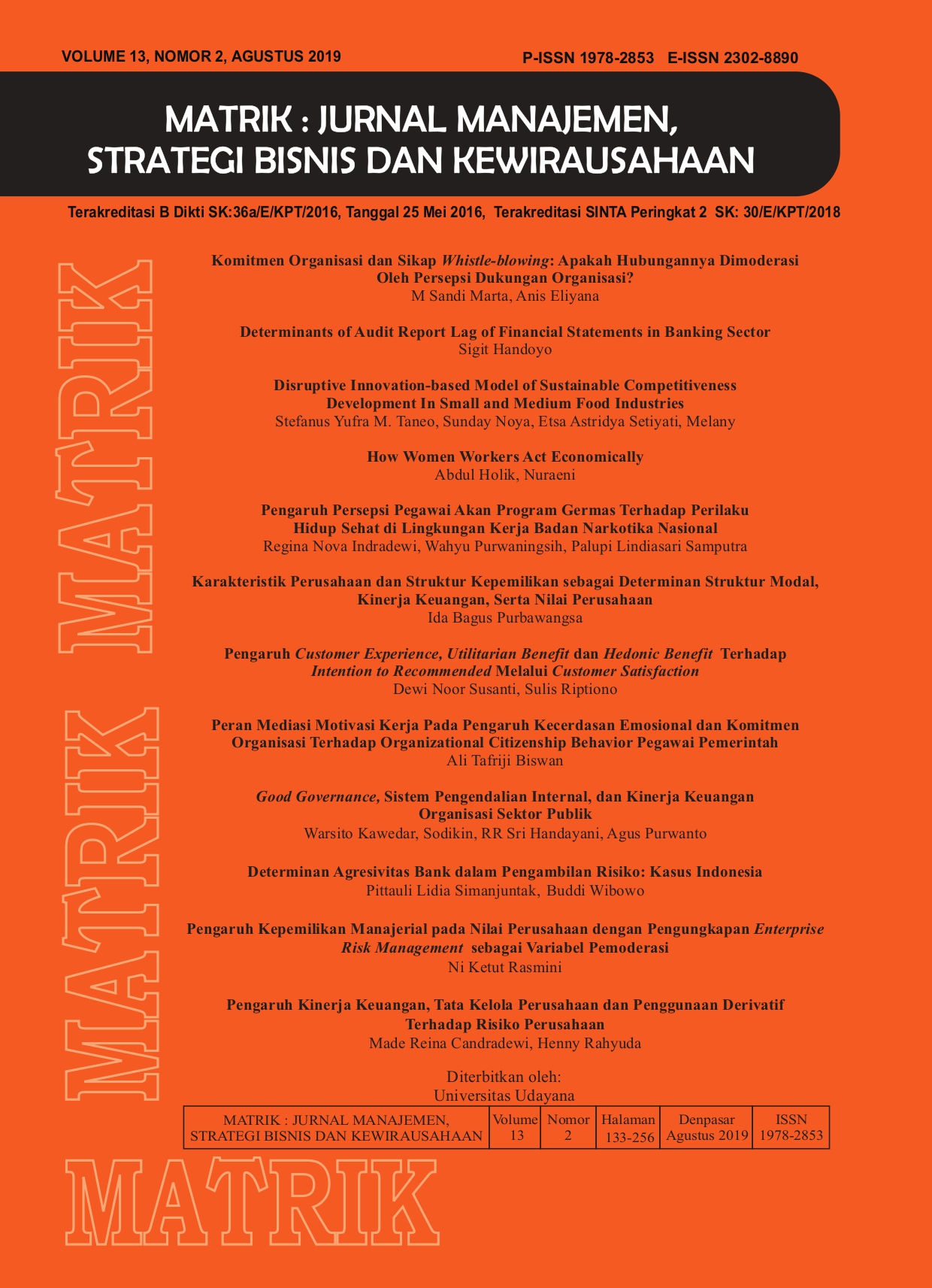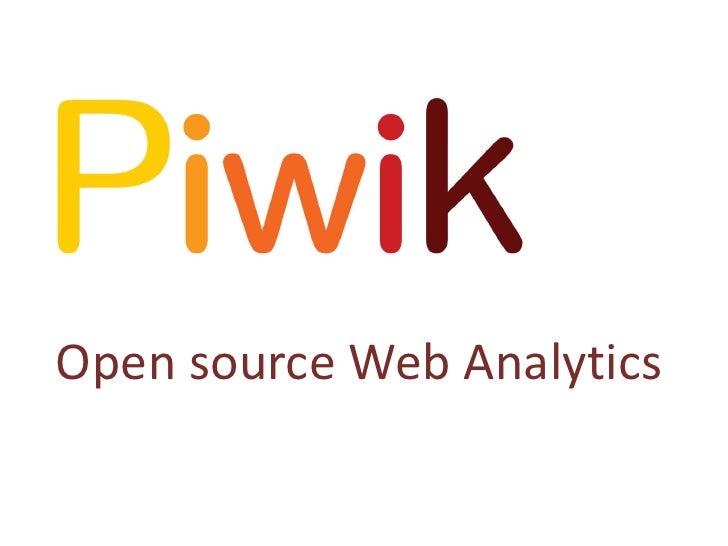Disruptive Innovation-Based Model of Sustainable Competitiveness Development in Small and Medium Food Industries
Abstract
Small and Medium Food Industries (SMFIs) play an important role in the national economy but its competitiveness is low due to the limited innovation applied by business managers. Current innovation research is partial and excludes disruptive innovation and sustainable competitiveness. This research fills the gap by developing a model for increasing the competitiveness of SMFIs based on disruptive innovation and identifying constraints faced by SMFIs if the model is implemented. Data was collected through Focus Group Discussions and surveys using questionnaires. With a model framework approach, the model is composed of six subsystems, namely input, production process, post production, marketing, and supporting institutions. The potential for disruptive innovation lies in the quality of functional food products and low production costs because resources are available locally. However, the potential for disruptive innovation has not been utilized optimally by SMFI due to various obstacles. The role of government is very important to optimize the competitiveness potential of SMFI.
Downloads
References
Barney, J.B. & Clark, D.N. 2007. Resource-Based Theory: Creating and Sustaining Competitive Advantage. Oxford University Press, Oxford.
Nagle, T. & Golden, W. 2009. An Examination of the Disruptive Innovation Paradox: The Application of the Innovators Dilemma to SMEs. Chapter in IFIP Advances in Information and Communication Technology.
Parwati, C. I., & Sakti, R. M. 2012. Pengendalian Kualitas Produk Cacat dengan Pendekatan Kaizen dan Analisis Masalah dengan Seven Tools. Prosiding Seminar Nasional Aplikasi Sains & Teknologi (SNAST) Periode III. Yogyakarta.
Russell, S. N., Millar, H.H. 2014. Competitive Priorities of Manufacturing Firms in the Caribbean. Journal of Business and Management, 16(10), 72 - 82.
Yuliatmoko, W., & Satyatama, D. I. 2012. Pemanfaatan Umbi Talas Sebagai Bahan Subtitusi Tepung Terigu Dalam Pembuatan Cookies Yang Disuplementasi Dengan Kacang Hijau. Jurnal Matematika, Sains, dan Teknologi , 13(2), 94-106.
Bagehot. 2017. The most influential business idea of recent years is Clayton Christensen’s theory of disruptive innovation. The Economist, 4 March 2018.
Balci, O. 2007. Modeling Fundamentals: Concepts of Models and Systems Concepts of Modeling Classifications of Models. Department of Computer Science Virginia Polytechnic Institute and State University (Virginia Tech), Blacksburg. https://manta.cs.vt.edu/balci
Barney, J. B. 1991. Firms Resources and Sustained Competitive Advantage. Journal of Management, 17 (1): 99-120.
Black, J. S. and Porter, L. W. 2000. “Management: Meeting New Challenges.” New Jersey: Prentice-Hall Inc.
Branzei, O. and Vertinsky, I. (2006). Strategic Pathways to Product Innovation Capabilities in SMEs. Journal of Business Venturing, 21(1), 75-105.
Callon, M., Laredo, P. and Raberharisoa, V. 1992. The management and evaluation of technological programs and the dynamics of technoeconomic networks: the case of the AFME. Research Policy, 21, 215-236.
CBS (Central Bureau of Statistics) Malang Regency. 2017. Malang Regency in Figures. BPS-Malang Regency.
Chishakwe, D.B. & Smith, W. 2012. An Analysis of the Impact of Disruptive Technology on the Success of the Small and Medium Enterprises (SMEs) in a Developing Nation: A Case of King Williams Town, South Africa. African Journal of Business Management, 6 (36): 10050-10060
Christensen, C.M. 2006. The Ongoing Process of Building a Theory of Disruption. Journal of Product Innovation Management, 23: 39-55.
Christensen, C.M. dan Raynor, M.E. 2003. The Innovator’s Solution: Creating and Sustaining Successful Growth. Harvard Business School Press, Boston.
Dong-Il, S. (2017). An Exploratory Study of Innovation Strategies of the Internet of Things SMEs in South Korea. Asia Pacific Journal of Innovation and Entrepreneurship, 11 (2), 171-189
Fischer, B.D. & Rohde, M. 2013. Management Resistance to Innovation. American Journal of Management, 13 (1), 93-99.
Forsman, H. and Temel, S. 2011. Innovation and Business Performance in Small Enterprises: An Enterprise-Level Analysis. International Journal of Innovation Management, 15(3), 641-665.
Freeman, J., Hellgren, T., Mastroeni, M., Paoli, G. P., & Kate Robertson, J. B. 2015. Innovation Models: Enabling new defence solutions and enhanced benefits from science and technology. Santa Monica, Calif., and Cambridge, UK: RAND Corporation.
Gunday, G., Ulusoy, G., Kilic, K., & Alpkan, L. 2010. An Integrated Innovation Model: How Innovations are Born and What are Their Impacts on Firm Performance? Proceedings of 15th European Operations Management Association (EUROMA) Conference, 92-101.
Hakansson, H., and Snehota, I. 1995. Developing Relationships in Business Networks. London: Routledge
Hamidah, M., Yusra, A. H., & Sudrajat, J. 2015. Analisis Nilai Tambah Agroindustri Kripik Ubi di Kota Pontianak. Jurnal Social Economic of Agriculture, 4(2), 60-73.
Kadocsa, G. and Borbas, L. 2010. Possible ways for improving the competitiveness of SMEs: A Central-European approach. www.kgk.uni-obuda.hu/system/files/7_BORBAS-KADOCSA.pdf
Kuhne, T. 2005. What is a Model. Dagstuhl Seminat Proceedings 04101. http://drops.dagstuhl.de.opus/volltexte/ 2005/23.
Lambert, S.C. & Davidson, R.A. 2013. Applications of the Business Model in Studies of Enterprise Success, Innovation and Classification: An Analysis of Empirical Research from 1996 to 2010. European Management Journal, 31(6), 668–681
Lantu, D. C., Triady, M. S., Utami, A. F., & Ghazali, A. 2016. Pengembangan Model Peningkatan Daya Saing UMKM di Indonesia: Validasi Kuantitatif Model. Jurnal Manajemen Teknologi, 15(1), 77 - 93.
Lestari, S.H. 2018. Kontribusi UMKM Terhadap Pertumbuhan Ekonomi Jatim Diklaim Terus Tumbuh Positif. Surya.co.id. Surabaya http://surabaya.tribunnews.com/2018/06/22/kontribusi-umkm-terhadap-pertumbuhan-ekonomi-jatim-diklaim-terus-tumbuh-positif
Markides, C. 2006. Disruptive innovation: in Need of Better Theory. Journal of Product Innovation Management, 2, 19 – 25.
Markides, C. 2012. How Disruptive will Innovation from Emerging Market be? Sloan Management Review, 54(1): 22-25.
Moghavvemi, S., Hakimia, F. & Feissal, T.M.F.T. 2012. Competitive Advantages Through it Innovation Adoption by SMEs. Social Technologies, 2(1), 24-39.
Nurainy, F., Nurdjanah, S., Nawansih, O., & Hidayat, R. 2013. Pengaruh Konsentrasi Cacl2 Dan Lama Perendaman Terhadap Sifat Organoleptik Keripik Pisang Muli (Musa Paradisiaca L.) Dengan Penggorengan Vakum (Vacuum Frying). Jurnal Teknologi Industri dan Hasil Pertanian, 18(1), 78-90.
Nuryati, Y., & Nur, Y. H. 2012. Variabilitas Harga Telur Ayam Ras di Indonesia. Buletin Ilmiah Litbang Perdagangan, 62(2), 235-252.
Pemerintah Kabupaten Malang. 2012. Peraturan Daerah Kabupaten Malang Nomor 3 Tahun 2012 Tentang Perlindungan Dan Pemberdayaan Pasar Tradisional Serta Penataan dan Pengendalian Pusat Perbelanjaan dan Toko Modern
Porter, M. 1980. Competitive Strategy: Techniques for analyzing Industries Competitors. New York: Free Press.
Pramono, F.S. 2018. Menyoal Kontribusi UMKM terhadap Ekspor. Kontan.co.id. https://m.kontan.co.id/news_analisis/menyoal-kontribusi-umkm-terhadap-ekspor
Preez, N. D., Louw, L., & Essmann, H. 2010. An Innovation Process Model for Improving Innovation Capability. Journal of High Technology Management Research, 9(2), 1-24.
Presidential Staf Office. 2016. Potensi Besar UKM Industri Makanan-Minuman. PresidenRI.go.id. http://presidenri.go.id/berita-aktual/potensi-besar-ukm-industri-makanan-minuman.html
Priyanti, A., & Inounu, I. 2016. Perilaku Harga Produk Peternakan pada Hari Besar Keagamaan Nasional. Analisis Kebijakan Pertanian, 14(2), 139-162.
Pujilestari, T. 2015. Review: Sumber dan Pemanfaatan Zat Warna Alam untuk Keperluan Industri. Dinamika Kerajinan dan Batik, 32(2), 93-106.
Putro, J. S., Budiastra, I. W., & Ahmad3, U. 2012. Optimasi Proses Penggorengan Hampa dan Penyimpanan Keripik Ikan Pepetek. Jurnal Keteknikan Pertanian, 26(1), 25-32.
Rostek, K. 2012. The Reference Model of Competitiveness Factors for SME Medical Sector. Economic Modelling, 29(5), 2039–2048.
Sengupta, J. 2014. Theory of Innovation: A New Paradigm of Growth. Springer.
Stachowiak, H. 1983. General Model Theory. Springer-Verlag, Wien and New York.
Taferner, B. 2017. A Next Generation of Innovation Model? An Integration of the Innovation Process Model Big Picture at Towards the Different Generations of Models. Review of Innovation and Competitiveness, 3(3), 47-60.
Tamba, M., Ginting, S., & Limbong, L. N. 2014. Pengaruh Substitusi Tepung Labu Kuning pada Tepung Terigu dan Konsentrasi Ragi pada Pembuatan Donat . Jurnal Rekayasa Pangan dan Pertanian, 2(2), 117-124.
Tambunan, T. T. H. 2008. Ukuran Daya Saing Koperasi dan UKM. Badan Perencanaan Pembangunan Nasional.
Taneo, S. Y., Setiyati, E. A., & Stephanus, D. 2013a. Innovation and Economic Behavior of Chinese Ethnic Entrepreneurs in Improving Competitiveness of Small and Medium Scale Food Industry. International Conference of Organizational Innovation. Hua Hin.
Taneo, S. Y., Stephanus, D. S., & Setiyati, E. A. 2013b. The Innovation Speed and Its Impact on Competitiveness of Small and Medium-Sized Enterprises. 1st Asia-Pacific Management and Business Application International Conference on Management and Business Science (pp. 189 - 207). Batu: FEB UB.
Taneo, S.Y.M., Noya, S., Setiyati, E.A., Melany. 2018. Disruptive Innovation dan Daya Saing Berkelanjutan: Kajian terhadap Industri Kecil dan Menengah Makanan di Kabupaten Malang. Laporan Akhir Hasil Penelitian Fundamental, Dikti.
Udaya, A. R., Suhendra, A. A., & Fashana, A. 2015. Perancangan Strategi Komunikasi Pemasaran Produk Kripik Pisang Pelangi Rasa Menggunakan Metode Balanced Scorecard dan Benchmarking. e-Proceeding of Engineering, 2(2), 4174-4181.
Undang-undang Republik Indonesia Nomor 3 Tahun 2014 tentang Perindustrian.
Vertakova, Y. V., Rudakova, O. V., Shadrina, V. V., Kobersy, I. S., & Belova, I. N. 2016. Strategy of Disruptive Innovation in Emerging Regional Markets: Factors of Success and Failure. International Journal of Economics and Financial, 6(S8), 274-279.
Vialed, R., Pozzali, A. 2010. Complex Adaptive Systems and the Evolutionary Triple Helix. Critical Sociology, 36(4), 575-594.
Wallin M.W. & von Krogh, G. (2010). Organizing for open innovation: focus on the integration of knowledge, Organizational Dynamics, 39 (2), 145–154.
Wibowo, D. H., Arifin, Z., & Sunarti. 2015. Analisis Strategi Pemasaran untuk Meningkatkan Daya Saing UMKM (Studi pada Batik Diajeng Solo). Jurnal Administrasi Bisnis (JAB), 29(1), 59-66.
Wijaya, H., & Sirine, H. 2016. Strategi Segmenting, Targeting, Positioning serta Strategi Harga pada Perusahaan Kecap Blekok di Cilacap. Asian Journal of Innovation and Entrepreneurship, 1(3), 175-190.
Zhang, Y., Zhao, S., & Xu, X. 2016. Business model innovation: an integrated approach based on elements and functions. Inf Technol Manag, 17, 303–310.
Zyl, H. v. 2006. Innovation Models and the Front-End of Product Innovation. University of Stellenbosch.
 This work is licensed under a Creative Commons Attribution-ShareAlike 4.0 International License.
This work is licensed under a Creative Commons Attribution-ShareAlike 4.0 International License.



















